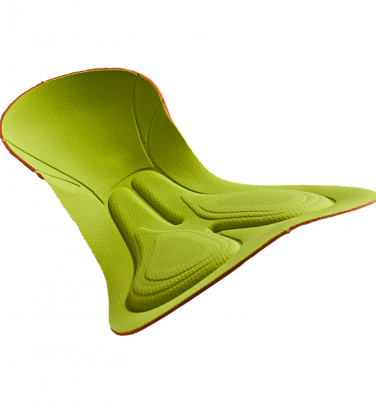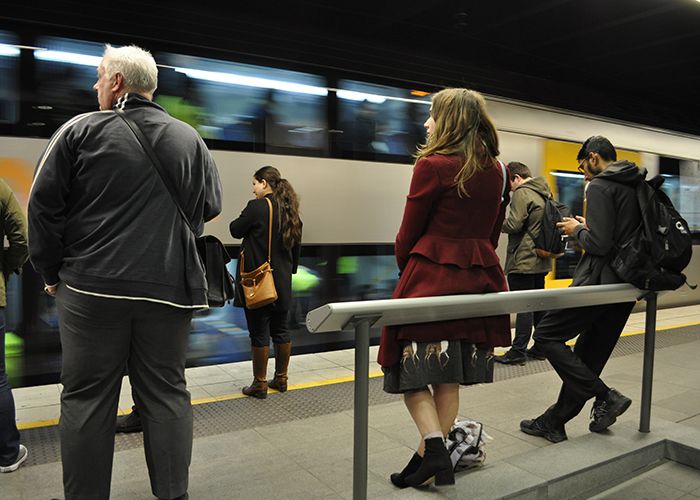There is an enormous amount of puff written by custom cycling clothing suppliers about the amazing properties of their shorts and how they can uniquely improve the comfort of the rider, but the truth is there is a limit to how much cycling shorts can contribute to relieving a sort backside. Here we will look at what cycling shorts can do to resolve discomfort and what they can’t do.
The obvious place to start is with the chamois (another name for the pad) – there is a fair bit of misinformation and inflated claims by cycling clothing manufacturers about their chamoises, often around the different densities of foam, the anatomical shape of the padding and the flexing of the pad. The real key areas of importance for a chamois however are the durability of the padding, the quality of the seams and the bulkiness of the pad. Whilst the distribution of the padding over different areas of the chamois are important, it is actually less complicated than you may have been lead to believe, in that the chamois’s main job is to provide cushioning for the seat bones – in other areas of the chamois, its function should be to provide a soft, low-friction interface for the area between your legs with some minimal padding.
The quality of the foam used for a great chamois as opposed to a low quality one is without doubt the most important feature, but it will only be truly revealed after it has been ridden on for a while. That is because good quality foam will not lose its cushioning capability nearly so fast than low quality foam (although please note that even top quality foam will always deteriorate over time). This means that a great chamois will take time to reveal its true properties, but the two other areas you can check out in a new chamois are the seams and the bulkiness – as one of the chamoises key purposes is to minimise friction, having prominent seams is a major negative point, so the high end chamoises will have bonded seams that are entirely smooth with no wrinkles or uneven edges. Cutting down the bulk of the chamois (everywhere except for the necessary cushioning for the seat bones) is also very important as any bulkiness will tend to bunch up and form a friction point.

Our point here is that making a great chamois requires it to fulfil rather simple objectives, but to achieve this simplicity is rather difficult and expensive. To give you an idea, the wholesale price for a high end chamois will be around €6, but you can buy cheap ones for under €1! Our chamois pictured above is we think among the very best available on the market, because it provides the key features mentioned above in a minimalist way.
A pair of cycling shorts can contribute two more things to backside comfort – first the panelling construction of the shorts and shoulder straps have to work to make sure the chamois is held firmly in place when in the riding position (so when you are bend over the handlebars rather than standing upright) so that the chamois is always in the right position and second to use fabrics in the shorts that are soft, will not bunch up and are breathable.
In this post, we are not going to discuss saddle design, other than to say there is no universal answer and it is very much down to personal choice. It is worthwhile to discuss another critical factor that contributes to backside comfort, which is your pedaling technique. Having a good pedal stroke is something that will naturally evolve as you ride more, not least because of the strengthening of appropriate ligaments and muscles that will allow you to maintain correct technique for prolonged periods. You can also actively work on improving your pedal stroke with sources like http://www.zendurancecycling.com/cycling-technique-for-cycling-performance.html .
The key thing to understand in terms of the relationship between backside comfort and pedal technique is that as a road cyclist doing reasonable distances, your pedal technique should be such that you are taking most of your body weight on your legs, rather than on your backside. That is to say that you are alternating your weight from one leg to the other to push down on the pedals, rather than taking the majority of the weight on the saddle and just using leg muscles to produce down-force on the pedals. With forces being equal and opposite, taking your weight in your legs will gently push your backside up from the saddle and so reduce the load that it is bearing. You should be doing this even when you are soft pedaling. Your relationship between your backside and your saddle should be more like how you lean against a leaning rail that you sometimes find at train stations (or even on trains). Essentially your feet take most of the weight.

When you get this pedaling technique right, you will always have tension in one or other of your quads (in fact even when you freewheel) – you should never just be slumped on your saddle. Having strong core muscles is an important part to getting this technique right, as your abdominal muscles should be working to pull weight from the front of the saddle and redistribute it down through your backside to your legs, which is something that will happen naturally as your pedaling technique demands that you redistribute your weight away from your saddle to your legs. Taking this weight off your backside can dramatically improve your comfort in the saddle, perhaps more so than any other factor.
If that all sounds rather complicated and perhaps you are new to cycling, not to worry, it is something that should come naturally as you ride more and your brain works out how to get more power to the legs. In other words taking weight off your saddle and redistributing it to your legs is not something you naturally do to make yourself more comfortable, it is something you will naturally do as your brain works out how to make your pedal stroke more efficient. The fact that it will make your backside incredibly more comfortable on a bike is a happy side effect!
Here at Carvalho Custom we do what we can to make all of our custom cycling & triathlon clothing the very best in can be, but we avoid making over-the-top and frankly dishonest claims about how much are kit can do. We just strive to offer the very best to our customers and let our kit speak for us.
